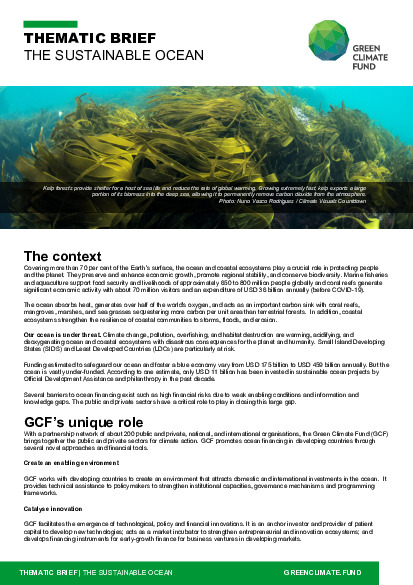Green hosting is a sustainable web hosting solution. It reduces environmental impacts significantly.
As digital activities grow, their carbon footprint increases. Green hosting emerges as a vital player in this scenario. It uses renewable energy sources to power servers. This helps in reducing greenhouse gas emissions. It also promotes energy efficiency in data centers.
Many businesses now shift to green hosting. They aim to support global environmental protection efforts. Understanding green hosting is crucial today. It plays a key role in mitigating digital pollution. This blog explores how green hosting contributes to a healthier planet. Learn the benefits and practices of green hosting. Discover how it aids environmental conservation. Join the movement towards a sustainable future online.

Credit: www.jba.af.mil
Introduction To Green Hosting
As the world becomes more digital, environmental concerns grow. Hosting websites can impact the planet. Green hosting offers a sustainable solution. It reduces the carbon footprint of online activities. This eco-friendly approach supports environmental protection.
What Is Green Hosting?
Green hosting uses renewable energy sources. It powers data centers sustainably. Wind and solar energy are common choices. This method minimizes pollution. Servers operate efficiently and reduce waste. Green hosting focuses on eco-friendly practices. It supports a cleaner and healthier planet.
Importance In The Digital Age
The digital age increases energy consumption. Websites need constant power. Green hosting helps cut down emissions. It offers a responsible choice for businesses. Consumers prefer environmentally conscious companies. Opting for green hosting enhances brand image. It aligns with global sustainability goals.

Credit: www.facebook.com
Environmental Benefits Of Green Hosting
Have you ever wondered about the environmental impact of the websites you visit daily? Green hosting is a sustainable alternative that can significantly reduce the ecological footprint of your online activities. By choosing green hosting, you actively contribute to environmental protection while enjoying seamless online experiences. But how exactly does it benefit our planet?
Reducing Carbon Footprint
Every server powering a website emits carbon dioxide due to energy consumption. Green hosting providers use renewable energy sources like wind or solar to power their data centers, minimizing carbon emissions. Imagine the impact if every website owner made this choice!
It's not just the big tech companies that need to act—your decision matters. Switching to green hosting is a simple yet powerful step toward reducing the carbon footprint of the digital world.
Conserving Energy Resources
Energy efficiency is a key component of green hosting. Providers often employ advanced cooling technologies and energy-efficient hardware to reduce energy consumption. This conservation effort means fewer resources are depleted.
Think of it as a win-win: your website runs smoothly while contributing to a sustainable future. Isn’t that worth considering when choosing your next hosting provider?
Green hosting is not just an eco-friendly choice; it's a statement of responsibility. By opting for sustainable solutions, you set a precedent for others to follow. Will your next click help the environment?
Technologies Behind Green Hosting
Green hosting uses renewable energy sources like wind and solar to power servers. This reduces carbon emissions significantly. Energy-efficient technologies and sustainable practices help protect the environment.
As the digital world expands, so does the demand for energy consumption. But did you know that the internet is responsible for nearly the same carbon emissions as the aviation industry? Enter green hosting—a sustainable solution paving the way for eco-friendly digital footprints. Curious about how this works? Let's dive into the technologies that power green hosting and its role in protecting our environment.
Renewable Energy Sources
Green hosting providers harness the power of renewable energy sources such as wind, solar, and hydroelectric power. By doing so, they reduce reliance on fossil fuels, which are the primary contributors to greenhouse gas emissions. Imagine your website running on the same power that fuels a wind farm. Not only does this significantly cut down carbon emissions, but it also supports the growth of sustainable energy industries. Some hosting companies even purchase renewable energy credits to offset their carbon footprint. This means that for every unit of energy they consume, they invest in renewable energy projects. As a result, choosing a green hosting provider directly contributes to a cleaner planet.
Efficient Data Center Design
Did you know that data centers are notorious for their high energy consumption? Green hosting companies are changing this narrative by investing in efficient data center designs. These designs focus on optimizing energy use through advanced cooling systems and energy-efficient hardware. By doing so, they drastically reduce the electricity required to keep servers running at optimal temperatures. Imagine a data center cooled by the natural chill of the Arctic air instead of relying on energy-guzzling air conditioners. This concept, known as free cooling, is one of many innovative solutions employed to minimize energy use. When hosting providers prioritize efficient data center design, they not only reduce their ecological footprint but also inspire other industries to adopt similar practices. Choosing green hosting is more than just a trend—it's a commitment to sustainability. Are you ready to make a difference with your online presence?
Green Certifications And Standards
In the world of web hosting, the term “green hosting” is gaining traction, especially as environmental consciousness becomes a priority. Green certifications and standards play a pivotal role in ensuring that hosting providers are truly committed to eco-friendly practices. These certifications not only help you identify genuine green hosting providers but also encourage companies to adhere to environmentally responsible operations.
Recognized Certifications
When choosing a green hosting provider, it’s crucial to look for recognized certifications. The most reputable ones include Energy Star, LEED (Leadership in Energy and Environmental Design), and ISO 14001. These certifications ensure that the hosting company meets stringent environmental standards and uses energy-efficient technologies.
Another noteworthy certification is the Green Power Partnership, which signifies that a company is committed to using renewable energy sources. Hosting providers with these certifications are not just paying lip service to sustainability; they’re actively reducing their carbon footprint.
Have you ever thought about what happens behind the scenes of your favorite websites? Recognized green certifications guarantee that these sites are hosted on servers powered by clean energy. This small detail can make a huge difference in reducing global carbon emissions.
Criteria For Eco-friendly Hosting
What makes a hosting service eco-friendly? Several criteria are used to evaluate the environmental impact of hosting providers. Firstly, they should use renewable energy sources like wind or solar power. This drastically cuts down on carbon emissions and helps preserve our planet for future generations.
Energy efficiency is another key criterion. Hosting providers should utilize energy-efficient servers and cooling systems. This reduces energy consumption significantly, making operations more sustainable.
Recycling and waste management practices are also important. An eco-friendly host should have effective recycling programs and minimize electronic waste. By choosing such a provider, you’re not only supporting green practices but also promoting a cleaner environment.
Is your current hosting provider meeting these criteria? It’s worth considering a switch to a green host that aligns with your environmental values. By doing so, you contribute to a healthier planet and encourage more businesses to prioritize sustainability.
Challenges In Implementing Green Hosting
Implementing green hosting faces hurdles like high costs and limited renewable energy access. Technical challenges also hinder seamless integration.
Implementing green hosting is a significant step toward environmental protection, yet it comes with its own set of challenges. These challenges can deter businesses from making the switch, despite the benefits of reducing carbon footprints and promoting sustainability. By understanding these hurdles, you can better prepare and strategize for a more eco-friendly hosting solution. ###
Cost Implications
Transitioning to green hosting often involves higher initial costs. Eco-friendly technologies and renewable energy sources may require substantial investment upfront. This can be a barrier for small businesses or startups with limited budgets. However, consider the long-term savings. Green hosting can lead to reduced energy bills and potential tax incentives. Does your business strategy accommodate future cost-saving benefits that outweigh initial expenses? ###
Technical Limitations
Green hosting solutions might not always offer the same level of technical support or features as traditional hosting. This can include limitations in server performance or compatibility with certain applications. You may need to compromise on certain functionalities or invest in additional resources to bridge these gaps. Have you considered how your current technical needs align with the capabilities of green hosting? Moreover, some green hosting providers may not have extensive experience in handling high-traffic websites. It's crucial to evaluate if their infrastructure can support your growth. Are you prepared to address potential scalability issues? By acknowledging these challenges, you can make informed decisions that align with both your environmental goals and business needs. Are you ready to take the step towards a more sustainable future?

Credit: data.unhcr.org
Case Studies Of Green Hosting Providers
When you think about web hosting, environmental protection might not be the first thing that comes to mind. However, the rise of green hosting providers is changing that narrative, showing us how digital services can contribute to a healthier planet. By exploring case studies of these eco-friendly companies, you can gain a deeper understanding of their impact and the innovative strategies they employ to make the world greener.
Leading Eco-friendly Companies
GreenGeeks, a leader in eco-friendly hosting, stands out for its commitment to sustainability. They not only match the energy their servers consume with renewable energy credits but go beyond by returning three times the energy they use back to the grid.
Another notable company is SiteGround, which integrates energy-efficient technologies and actively participates in community-driven environmental initiatives. Their dedication to reducing their carbon footprint is evident in their data center management and operations.
Success Stories
Take the story of EcoWebHosting, a small company that made a big impact by switching to renewable energy sources. They saw a significant reduction in their operational costs and reported an increase in customer loyalty due to their sustainability efforts.
Another inspiring example is DreamHost, which adopted green policies and partnered with environmental organizations. Their efforts not only enhanced their brand image but also attracted a new segment of eco-conscious clients.
These success stories reveal a compelling truth: embracing green hosting is not just about saving the planet; it's also a smart business move. What steps can you take today to support eco-friendly digital services?
Consumer Role In Promoting Green Hosting
Green hosting offers a way to reduce carbon footprints. Consumers play a key role in promoting this sustainable choice. By opting for green hosting, they support eco-friendly practices. They drive demand for renewable energy sources. This shift impacts the hosting industry significantly.
Choosing Sustainable Options
Consumers have the power to choose sustainable hosting options. They can select providers that use renewable energy. This simple choice supports environmental protection. It encourages hosting companies to adopt green practices. By doing so, they reduce their environmental impact.
Research is essential. Look for hosting providers with clear green credentials. Check if they use wind or solar energy. Consider their energy-efficient data centers. Transparency in operations is a positive sign. It shows commitment to sustainability.
Influencing Market Trends
Consumer demand influences market trends. When more people choose green hosting, the market adapts. Hosting companies notice this shift. They begin to offer more sustainable options. This change makes green hosting more accessible.
Word of mouth also plays a role. Sharing experiences with green hosting spreads awareness. It encourages others to consider eco-friendly choices. This collective action can lead to larger industry changes.
Consumers can also support initiatives for sustainable practices. Engaging in forums or communities helps spread the word. This participation influences broader environmental goals. Every small step counts in promoting green hosting.
Future Of Green Hosting
Green hosting offers eco-friendly solutions to reduce carbon footprints in data centers. These services use renewable energy to power servers, minimizing environmental impact. As awareness grows, green hosting becomes crucial for sustainable digital practices.
The Future of Green Hosting is not just a concept; it's a movement gaining momentum as both businesses and individuals recognize the importance of sustainability. As we look ahead, the possibilities for green hosting to revolutionize the tech industry are endless. The question isn't whether green hosting will become mainstream, but rather, how quickly it will happen.
Innovations In Eco Technologies
Imagine servers powered solely by renewable energy. This is becoming a reality with solar and wind-powered data centers. Data centers are also exploring liquid immersion cooling, which significantly reduces energy consumption compared to traditional air cooling methods. Another fascinating development is the use of AI to optimize energy use, ensuring servers run efficiently without waste.
Predictions For Industry Growth
The demand for green hosting is set to soar as more companies commit to reducing their carbon footprint. Experts predict that businesses offering eco-friendly hosting solutions will see substantial growth in market share. Imagine a future where green hosting isn't just an option but a standard. How will this impact your choice of hosting provider?
As technology continues to evolve, so do the methods of powering and maintaining it sustainably. Green hosting is at the forefront of this change, offering a glimpse into a future where environmental protection and technological advancement go hand in hand. Whether you run a small blog or a large e-commerce site, embracing green hosting could be your step toward a cleaner, greener planet. Are you ready to make that change?
Conclusion: Green Hosting And Global Impact
Green hosting is more than just a trend. It's a significant step towards environmental protection. By reducing energy consumption, it lowers carbon footprints. This helps fight climate change. The global impact is undeniable. Choosing green hosting promotes sustainable practices. It supports a healthier planet for future generations.
Summing Up Benefits
Green hosting offers many benefits. It reduces environmental damage. Servers use renewable energy sources. This cuts down on harmful emissions. It also promotes energy efficiency. Companies save on energy costs. Customers enjoy reliable, eco-friendly services. It also enhances brand reputation. Businesses show they care about the planet.
Call To Action For Sustainable Choices
Consider switching to green hosting today. It's a simple step. Yet it has a big impact. Choose hosting providers with green certifications. Support businesses that prioritize sustainability. Encourage others to make eco-friendly decisions. Together, we can protect our planet.
Frequently Asked Questions
What Is Green Hosting?
Green hosting refers to web hosting services that use eco-friendly practices. They aim to reduce their carbon footprint by using renewable energy sources and energy-efficient technologies. Green hosting providers invest in sustainable infrastructure, such as wind or solar energy, to power their servers, contributing to environmental protection.
How Does Green Hosting Help The Environment?
Green hosting helps the environment by reducing carbon emissions. Providers use renewable energy sources, minimizing reliance on fossil fuels. This approach lowers the overall environmental impact of hosting services. Additionally, many green hosting companies participate in eco-friendly initiatives, like tree planting, to offset their carbon footprint further.
Is Green Hosting Cost-effective?
Yes, green hosting can be cost-effective. Many green hosting providers offer competitive pricing similar to traditional hosting. As renewable energy becomes more affordable, operational costs decrease, benefiting customers. Additionally, using energy-efficient technologies can reduce expenses, making green hosting a viable option for environmentally conscious businesses.
Can Green Hosting Improve Website Performance?
Green hosting can improve website performance by utilizing advanced technologies. Many green hosts invest in energy-efficient servers and data centers. These systems often provide faster speeds and reliable uptime. By optimizing infrastructure, green hosting can enhance user experience while minimizing environmental impact.
Conclusion
Green hosting plays a key role in protecting our planet. Choosing eco-friendly hosting reduces carbon footprints. It helps conserve energy and resources. This choice supports sustainable practices in technology. Every small action counts in environmental protection. Opting for green hosting contributes to a healthier Earth.
Small changes can make a big difference. Start with your hosting choice. Support the environment and make a positive impact. Let's strive for a cleaner future together. Green hosting is more than a trend; it's a responsibility. Embrace it and help protect our planet.
{ “@context”: “https://schema.org”, “@type”: “FAQPage”, “mainEntity”: [ { “@type”: “Question”, “name”: “What is green hosting?”, “acceptedAnswer”: { “@type”: “Answer”, “text”: “Green hosting refers to web hosting services that use eco-friendly practices. They aim to reduce their carbon footprint by using renewable energy sources and energy-efficient technologies. Green hosting providers invest in sustainable infrastructure, such as wind or solar energy, to power their servers, contributing to environmental protection.” } } , { “@type”: “Question”, “name”: “How does green hosting help the environment?”, “acceptedAnswer”: { “@type”: “Answer”, “text”: “Green hosting helps the environment by reducing carbon emissions. Providers use renewable energy sources, minimizing reliance on fossil fuels. This approach lowers the overall environmental impact of hosting services. Additionally, many green hosting companies participate in eco-friendly initiatives, like tree planting, to offset their carbon footprint further.” } } , { “@type”: “Question”, “name”: “Is green hosting cost-effective?”, “acceptedAnswer”: { “@type”: “Answer”, “text”: “Yes, green hosting can be cost-effective. Many green hosting providers offer competitive pricing similar to traditional hosting. As renewable energy becomes more affordable, operational costs decrease, benefiting customers. Additionally, using energy-efficient technologies can reduce expenses, making green hosting a viable option for environmentally conscious businesses.” } } , { “@type”: “Question”, “name”: “Can green hosting improve website performance?”, “acceptedAnswer”: { “@type”: “Answer”, “text”: “Green hosting can improve website performance by utilizing advanced technologies. Many green hosts invest in energy-efficient servers and data centers. These systems often provide faster speeds and reliable uptime. By optimizing infrastructure, green hosting can enhance user experience while minimizing environmental impact.” } } ] }


